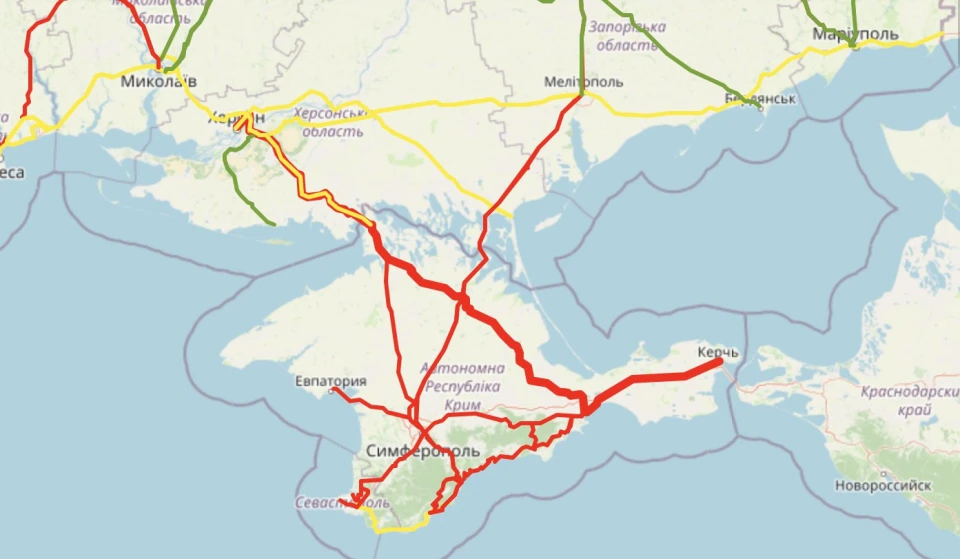
Ukraine identifies Russia’s new logistics routes from Crimea after Chonhar bridge hit
Russian troops have faced problems with transportation routes connecting occupied mainland Ukraine with Crimea. Most of the bridges are damaged, preventing them from transporting heavy equipment and weapons
Operational Command South's press center head Natalia Humeniuk reported this.
The main bridges that have been damaged and are key to Russian transportation and logistics routes cannot be restored to full capacity. Therefore, the invading Russian troops are forced to use the M-17 highway, which runs overland through Armiansk, in many situations.
"Because the damage that has been done to them does not fully correspond to the capacity. In particular, with regard to heavy equipment, weapons and ammunition transportation. But in most cases, the M-17 highway is still used," said Humeniuk.

In the photo: M-17 highway. Screenshot of the map
As for the M-18 highway, which runs across the Chonhar bridge, the enemy can use it only to transport personnel, as the crossing cannot withstand heavy loads.
Humeniuk also noted that railroad transportation sometimes passes through the Crimean bridge, but automobile traffic is extremely difficult.
Explosion at the Chongar Bridge
On the night of June 22, the Russian forces reported an explosion at the Chongar Bridge near the temporarily occupied Crimea.
According to the collaborationist Volodymyr Saldo from Kherson, the strike was allegedly carried out by a British Storm Shadow missile. The road surface on the bridges was damaged, but there were no casualties. Later, he threatened strikes on bridges in the Odesa region.
The General Staff of Ukraine's Armed Forces stated that it was deliberate work by Defense Forces and partisans. The Russian occupiers made a pontoon crossing immediately after the attack on the Chongar Bridge, which connects the temporarily occupied Crimea with Ukraine.
The UK Ministry of Defence noted that the strikes on the bridges near Chongar at the entrance to Crimea have significantly complicated logistics for the Russian occupying forces in Zaporizhzhia region. This is evidenced by their rapid pace of building a pontoon ferry.
On June 28, OC South spokesperson Natalia Humeniuk said on Espreso TV that after the Chongar Bridge was blown up, Russia was trying to use an alternative route that led through Armyansk.
On August 6, Ukrainian Defense Forces missiles hit the Chonhar bridge and the bridge across the Tonka Strait connecting the city of Henichesk to the Arabat Spit.
The Institute for the Study of War considers the Ukrainian Armed Forces' strikes on the bridges on the occupied territory leading to Crimea to be part of a Ukrainian interdiction campaign to create decisive counteroffensive operations.
On August 7, Serhiy Khlan, a deputy of the Kherson Regional Council, told Espreso that the Chonhar bridge is still closed, and small armored personnel carriers are already moving across the bridge toward Henichesk.
- News












































